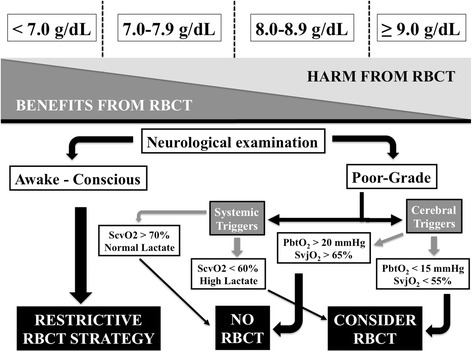Fig. 3.

The decision to administer red blood cell transfusions (RBCT) should take into consideration the potential benefits and harms of this intervention, according to different haemoglobin (Hb) levels at which RBCT is initiated. In brain-injured patients, the RBCT strategy should be “restrictive” (if Hb is less than 7.0 g/dl) in awake and conscious patients. For poor-grade comatose patients, systemic (superior vena cava oxygen saturation (ScvO 2) or high lactate levels) or cerebral triggers (jugular vein oxygen saturation (SvjO 2) or brain tissue oxygen pressure (PbtO 2)) could be used to guide RBC administration
